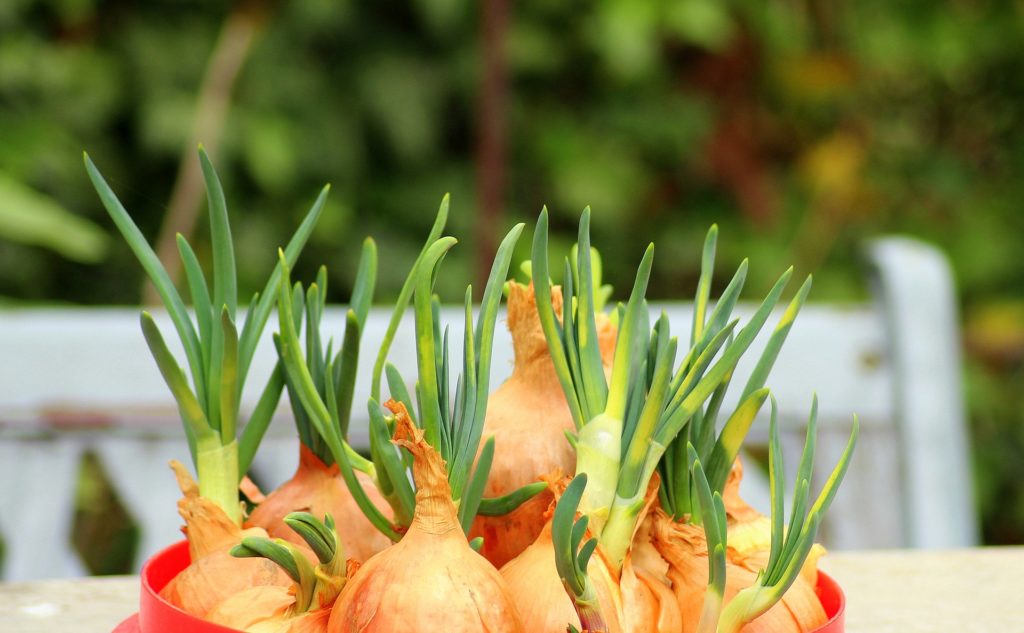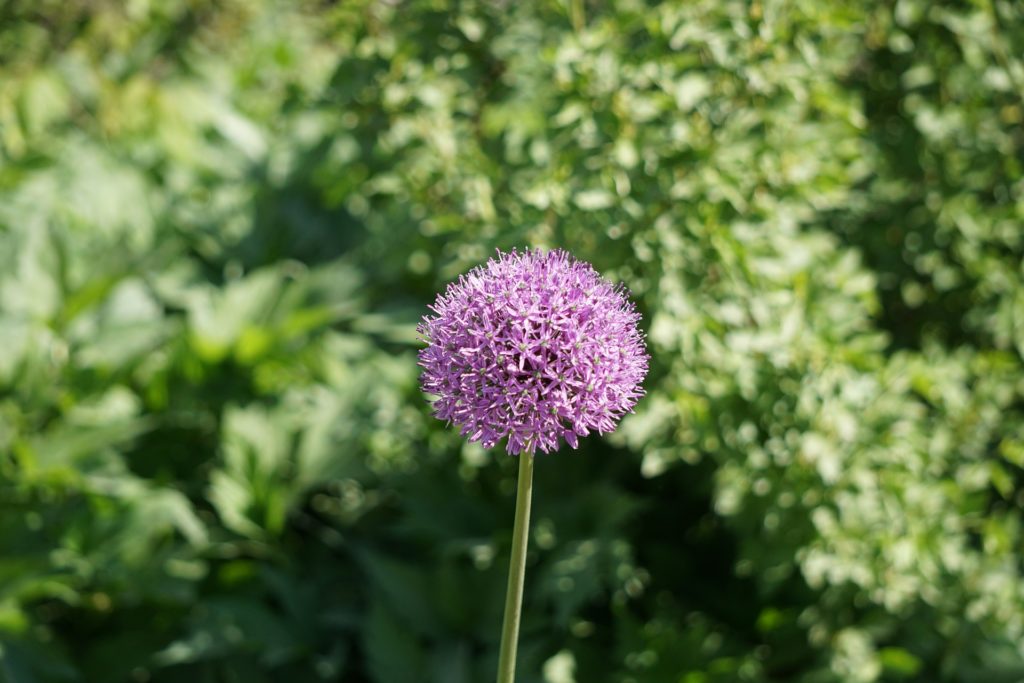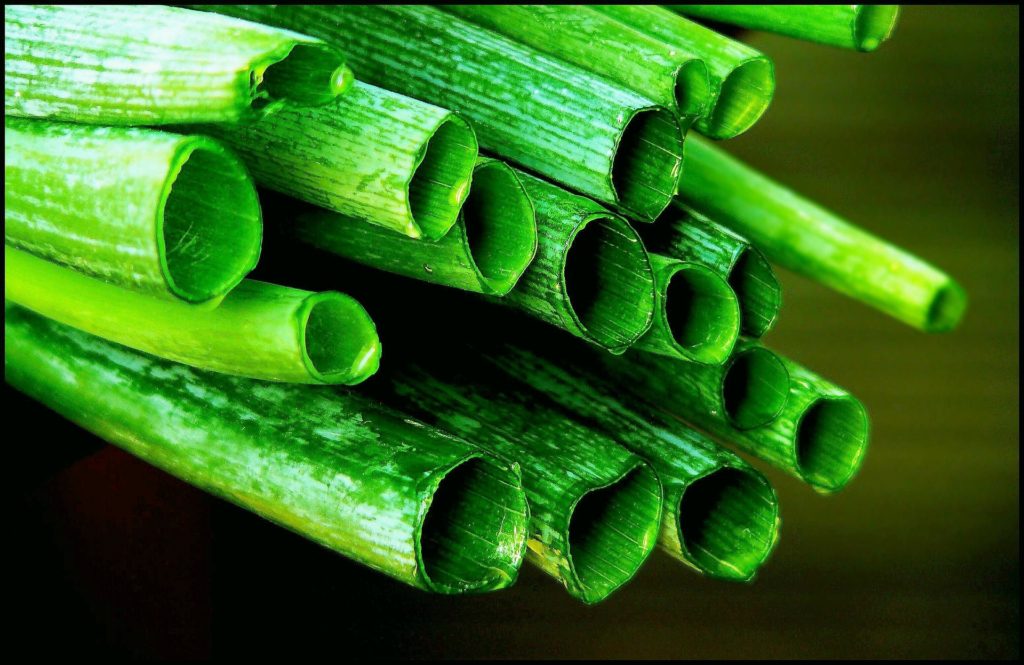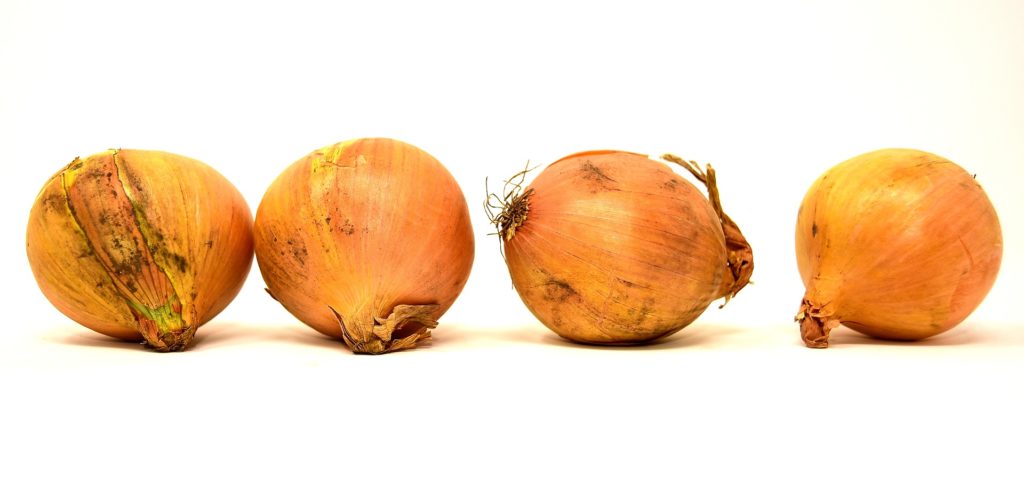You reach into the pantry, and you fumble around for your bag of delicious, sweet onions…
You have to get yourself together this afternoon, and quickly prep your delicious pork roast; procrastination has done you wrongly today, so you’re speeding through the pantry in the dark….
Suddenly, something jumps out at you, and you leap back into a full blown panic attack!
Was it a snake?
Did a spider just touch me???
What is in my pantry!?
You grab a fly swatter, prepared to defend your honor and save your prized boxes of Mac & Cheese from a potentially horrid, reptilian fate….
… It’s your onions. Embarrassment, party of 1!
But you have identified the pantry monster. You did it! So, what in the world caused your onions to turn on you for a cheap laugh??

Why Are My Onions Sprouting?
I’m sure you don’t have to be told that an onion is what remains of the “root system” of a grown onion plant.
However, some people never had the opportunity to encounter a live onion. Until it comes for them, in the middle of the afternoon, in a dark pantry.
Truth be told, the onion is more of a tuber, just like a potato! The root system is actually formed underneath the bulb, and the stalk end of the bulb is where the plant once stood, proudly, above the dirt.
So, if my onions are dead…. why are my onions sprouting in my pantry?!
As you may have noticed with your potatoes, tubers sprout. This is how many of these plants come back in the following years, allowing the species to thrive. Nearly any root vegetable will show signs of regrowth, if you give them the right conditions. This includes:
- Potatoes
- Onions
- Carrots
- Celery
- Turnips
- Beets
- Ginger
- Sweet Potatoes
All of these common vegetables will grow back!
Onions, when they are sprouting from the large bulbs that were once intended for food, are in their second year of life. During the first year of an onion plant’s life, it sprouts from a seed, grows into a larger plant, forms a small bulb, and grows the bulb to a rather large size once the longest days of the year come and go. As winter comes, the onion falls dormant; this is when most onions are harvested for consumption.
When late winter or early spring comes, the plant would normally resume growth, form a nice, large green plant, then flower and go to seed; completing its life cycle.

Triggers That Cause Onions to Sprout in the Pantry
There are a few different factors that will cause onions to “wake up” from their dormancy. Onions are processed for dry, dark storage by commercial farms and homesteads alike after harvest. When an onion spends time in a dry, dark, cool space, any environmental change can have a magnified effect. You might be unknowingly contributing to one of these factors:
- Temperature Fluctuations: If an onion is in a warm place, or the onion goes from warm to cold consistently, the bulb may commence sprouting as if spring has arrived.
- Moisture: The soil is moist in spring, which triggers the bulb to produce roots and sprout when the bulb receives adequate moisture. This moisture is usually in the form of humidity indoors, which may occur in a pantry without an air vent. Humidity generally accompanies heat. Or, you have spilled water or leaking food packages; this will cause a bulb to spring to life after a period of dry storage.
- Light: If light is reaching your onions, they will react by producing green growth to photosynthesize the sunlight. This, like the previous two, is amplified if your onions are taken back and forth from a dark pantry to a well lit counter top frequently.
If all else fails… Why not eat the tops as green onions, or in place of chives?

How to Store Onions and Potatoes Long Term (Other Dry Root Veggies, too!)
If you want to make sure that your onions and potatoes keep for as long as possible, keep the away from each other. That’s right! Store your potatoes and onions in separate sections of the pantry, or better yet; in different rooms. You could also use a potato and onion storage bin. As long as they’re stored properly, onions and potatoes are some of the longest lasting emergency crops to keep the family fed through winter.
That was an important one that I really needed to get out of the way.
You should always store onions and potatoes in a room that holds a consistent temperature; think root cellar, or a wine cellar. A lot of people who grow their own root crops will keep their veggies in a basement or crawlspace until the time comes to eat them. Potatoes, you must be careful with; they should never be stored in cold, refrigerated conditions, due to a potentially dangerous chemical reaction. If you store potatoes in the cold, limit it to only seed potatoes. Fluctuating temperatures will encourage root vegetables to begin their spring growth.

Keep your onions in a dark place, and only remove the onions that you need to use. You do not want to bring them back and forth between lit and dark places; leave the unused onions in storage so they don’t receive growth-tempting light.
You also need to keep the onions dry. If you are storing onions in bulk, silica gel, wood chips, pelleted bedding, and newspapers all help to wick any and all moisture away. Keep onions away from anything that might spill or leak liquid, such as bottled beverages, juice boxes, bags of sauces, or other produce that has a high water content.